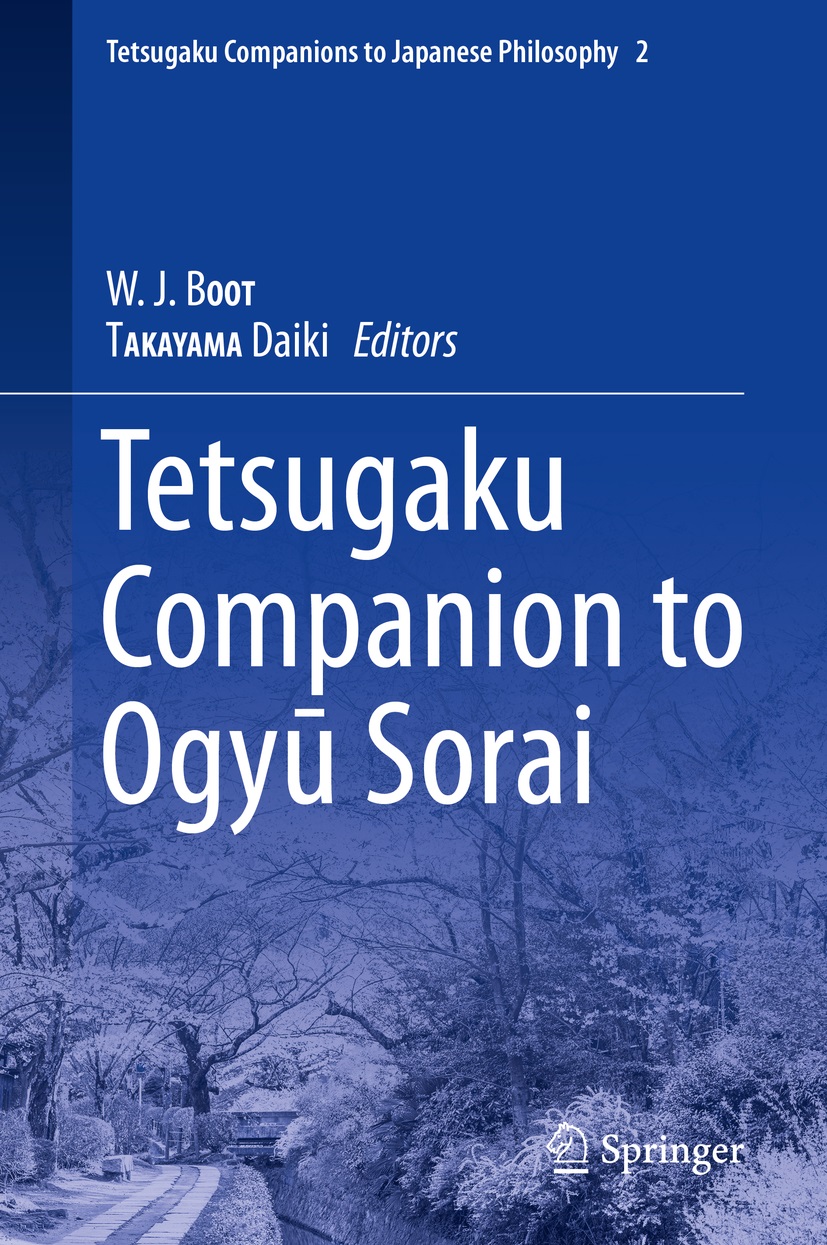
Title
Tetsugaku Companions to Japanese Philosophy Tetsugaku Companion to Ogyu Sorai
Language
English
Released
2019
ISBN
978-3-030-15474-5
Published by
Springer International Publishing
Book Info
See Book Availability at Library
Japanese Page
Uno Meika, a Confucian scholar of the mid-Edo period, lamented the fact that, whereas Mount Fuji and Ogyū Sorai are so extraordinary that they have few equals even in China, they are regrettably known only in Japan. While the renown of Ogyū Sorai is nowhere near that of Mount Fuji, today research on Sorai is being conducted not only in Japan but around the world. This book is an introduction to Sorai’s thought written in English by researchers of several different nationalities.
Part I consists of introductions to Sorai’s chief works. There have already been published English translations of works of his such as Bendō, Benmei, and Seidan, dealing with Confucianism and contemporary politics, and the introductions in this book also cover his writings on military matters and philology. In view of the series title “Tetsugaku Companions to Japanese Philosophy,” the selection of works taken up here may seem incongruous, but we wanted to show that Sorai’s scholarly interests extended in many directions and were interconnected.
Part II consists of several essays about Sorai that approach him from various angles. As is evident from the table of contents, they not only present analyses of his thought but also deal with his life and the reception of his ideas. These essays provide an overview of Sorai’s cultural milieu, his influence on intellectual thought in later times, and the position of Sorai’s school of thought in the history of East Asian thought. My own essay (chap. 16) summarizes trends in the study of Sorai’s thought in modern Japan.
It would be fitting to recall that members of Sorai’s school were eager to communicate the fruits of their scholarship overseas. Sorai’s commentary on the Analects was introduced to Korea and the Qing empire and was also quoted in the writings of Korean and Chinese scholars (see chap. 15 by Lan Hung Yueh for details). Members of Sorai’s school would perhaps have also been delighted that a publishing company in the Netherlands, with which Japan had trade relations at the time, has published a book about Sorai. But Sorai also discussed the limitations of translation with great perspicacity. He regarded kundoku, a method of reading classical Chinese by rearranging the words in accordance with Japanese word order, as a form of translation and argued that it was impossible to understand classical Chinese properly by this means. Members of his school would perhaps have also warned against relying on simple introductions and maintained that his writings should be read in the original. But they, too, would probably have recognized the need for an introduction in any field of endeavour, even if it is later no longer needed. I sincerely hope that this book will become a good guidebook for entering into the depths of Sorai’s thought.
(Written by TAKAYAMA Daiki, Associate Professor, Graduate School of Arts and Sciences / 2021)
Table of Contents
Part 1. Kaidai / Introductions.
Chapter 2. Yakubun sentei 訳文筌蹄 (Aihara Kōsaku).
Chapter 3. Sorai’s Military Studies (Kojima Yasunori).-
Chapter 4. Ken’en zuihitsu 蘐園随筆 (“Jottings from the Miscanthus Garden”), Ken’en jippitsu 蘐園十筆 (“Ten Writings from the Miscanthus Garden”) (Takayama Daiki).
Chapter 5. Gakusoku 学則 (“School Rules”), Sorai-sensei tōmonsho 徂徠先生答問書 (“Master Sorai’s Responsals”) (Takayama Daiki).
Chapter 6. Bendō and Benmei (John A. Tucker).
Chapter 7. Rongo-chō 論語徴 (“Proof of the Analects”), Daigaku-kai 大学解 (“Explanation of the Great Learning”), Chūyō-kai 中庸解 (“Explanation of the Mean”) (Sawai Keiichi).
Chapter 8. Seidan 政談 (“Discourse on Government”) and Taiheisaku 太平策 (“A Plan for the Great Peace”) (Tajiri Yūichirō).
Chapter 9. Ogyū Sorai’s Collected Works (Sorai-shū) (Sawai Keiichi)
Part 2. Essays.
Chapter 10. An “Intellectual-Historical” Biography of Ogyū Sorai (Sawai Keiichi).
Chapter 11. Sorai’s Theory of Learning (Kojima Yasunori).
Chapter 12. Gods, Spirits and Heaven in Ogyū Sorai’s Political Theory (Olivier Ansart).
Chapter 13. Ogyū Sorai and the Forty-Seven Rōnin (John A. Tucker).
Chapter 14. “The Reception of Sorai’s Thought in the Second Half of the Edo Period” (W. J. Boot). Chapter 15. “Sorai’s Teachings in East-Asia: The Formation of His Methodology of Studying the Classics and the Reception of His Works on the Classics” (Lan Hung Yueh).
Chapter 16. The Study of Sorai’s Thought in Modern Japan (Takayama Daiki).
Related Info
Reviewed by Kate Wildman Nakai (Sophia University “Monumenta Nipponica”Vol.75, Number 2, pp.365--369 2020)
https://muse.jhu.edu/article/785411



 Find a book
Find a book


 eBook
eBook